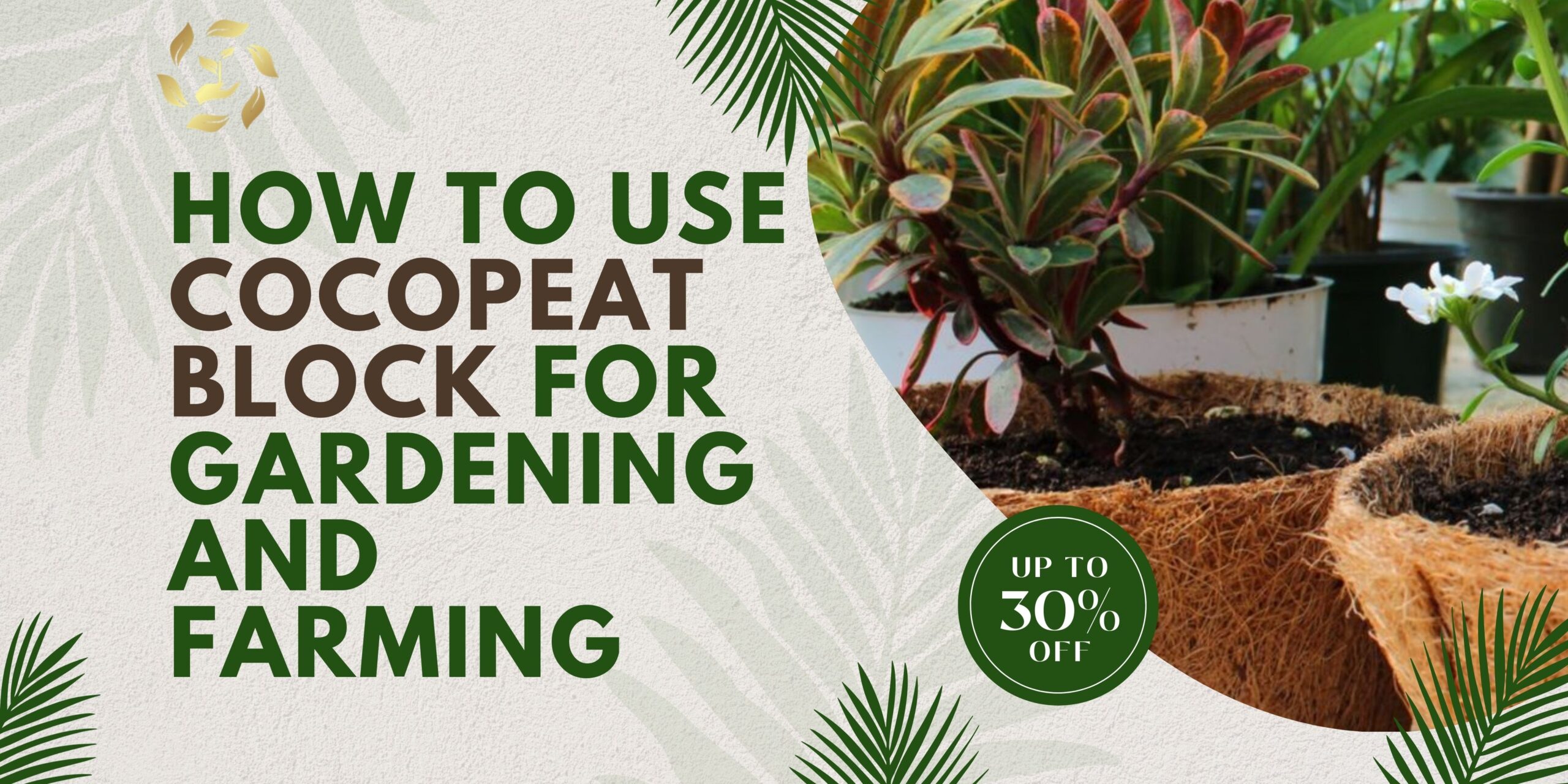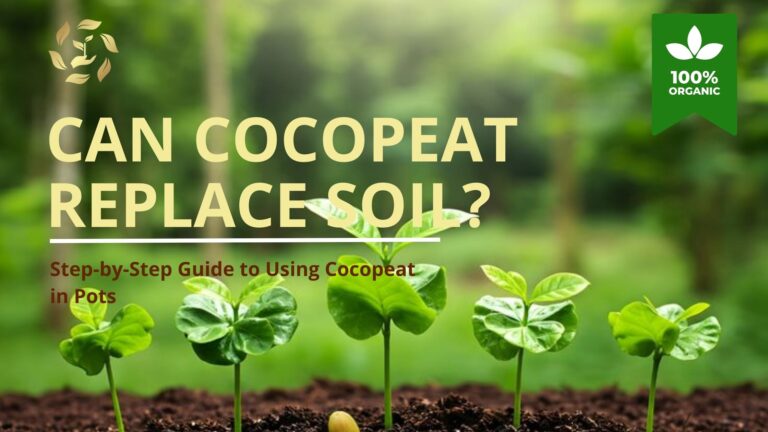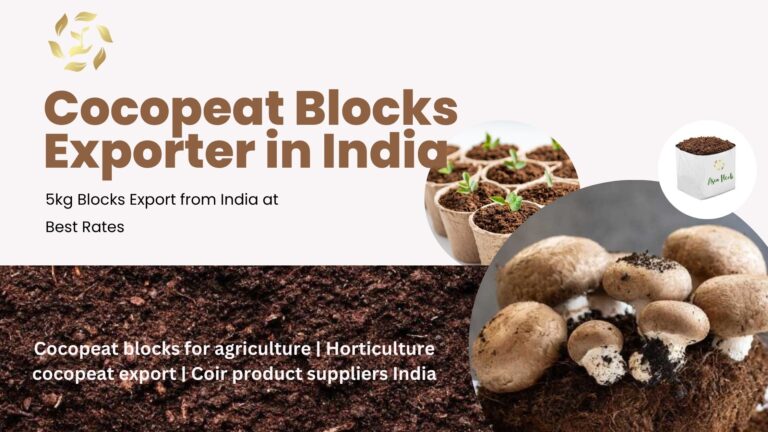Asiaflock Enterprises

How to Use Cocopeat Block for Gardening and Farming
When it comes to sustainable gardening and modern farming, growers are increasingly turning to natural, eco-friendly mediums. One such medium that has gained immense popularity worldwide is cocopeat. If you’re wondering how to use cocopeat block effectively in gardening and farming, this guide will take you through every detail you need to know.
What is Cocopeat?
Cocopeat, also known as coir pith, is a by-product of coconut husk processing. It is lightweight, porous, and an excellent soil substitute that provides both water retention and aeration. Unlike traditional soil, cocopeat is resistant to pathogens, making it a preferred growing medium for farmers and gardeners seeking organic solutions.
Since it comes compressed in a solid form, it is often supplied as a cocopeat brick 5 kg, which can be easily rehydrated and used for multiple gardening and farming applications.
Did You Know ?
A single cocopeat brick 5 kg can expand up to 60–70 liters when rehydrated, making it a cost-effective and space-saving growing medium.
Why Choose Cocopeat for Gardening and Farming?
Before learning how to use cocopeat block, let’s explore why it is such a game-changer:
- Water Retention: Cocopeat can hold up to 8–10 times its weight in water.
- Soil Aeration: Prevents soil compaction, ensuring roots get proper oxygen.
- Eco-Friendly: Made from coconut husk, it’s a renewable, biodegradable material.
- Pathogen Resistance: Naturally resists harmful fungi and bacteria
- Reusability: With proper treatment, cocopeat can be reused for several crop cycles.
For growers aiming to adopt Organic Agricultural Products, cocopeat serves as a natural and safe alternative to synthetic mediums.
Step-by-Step Guide: How to Use Cocopeat Block
Here’s the complete process of preparing and applying cocopeat for gardening and farming:
1. Choose the Right Cocopeat Block
Cocopeat is available in different sizes, but most commonly, farmers and gardeners buy cocopeat brick 5 kg. This size is easy to handle, store, and expand when needed.
2. Rehydrating the Block
Since cocopeat is compressed, it needs to be rehydrated before use. Follow these steps:
- Place the block in a large container or tub.
- Add 20–25 liters of clean water.
- Let it sit for 30–40 minutes.
- The block will gradually expand into soft, fluffy cocopeat.
A 5kg block typically expands to nearly 60–70 liters of ready-to-use cocopeat.
3. Fluffing and Breaking Apart
Once the block has absorbed water, break it apart with your hands. Ensure the material is uniform and free of hard chunks. This fluffing helps improve its aeration properties.
4. Mixing with Soil or Using Alone
Depending on your requirement, cocopeat can be used in different ways:
- For Potting Mix: Mix cocopeat with soil, compost, and sand in equal ratios.
- For Seed Germination: Use cocopeat alone in seed trays.
- For Hydroponics: Mix with perlite or vermiculite for a soilless growing medium.
5. Planting and Maintenance
Now that your cocopeat is ready, you can plant directly into it or mix it with soil. Ensure proper watering, as cocopeat retains moisture longer than regular soil.
By now, you’ve understood the step-by-step process of how to use cocopeat block effectively for different purposes.
Benefits of Using Cocopeat in Farming
While gardeners enjoy its benefits for houseplants, cocopeat is equally useful in large-scale farming. Here’s how it supports agriculture:
- Improved Crop Yield: Better root development ensures healthier crops.
- Reduced Fertilizer Wastage: Nutrients stay longer in the root zone.
- Climate Adaptability: Helps crops withstand heat and drought.
- Eco-Friendly Cultivation: Since cocopeat comes from Coconut Products, it promotes sustainable farming practices.
Cocopeat in Global Trade
With demand rising globally, India has become a major Cocopeat 5kg Blocks Exporter. These blocks are shipped worldwide due to their compact form, making them easy to transport while retaining excellent quality. Farmers across different regions rely on Indian cocopeat for their hydroponic systems, nurseries, and commercial greenhouses.
How to Use Cocopeat for Plants
If you’re specifically wondering how to use cocopeat for plants, here’s a simple method:
- Prepare the cocopeat block as explained earlier.
- Fill pots or containers with 70% cocopeat and 30% compost.
- Plant seeds or saplings directly in this medium.
- Water lightly; cocopeat will keep the roots moist for days.
This ensures plants grow stronger, healthier, and require less frequent watering.
Additional Tips for Using Cocopeat
- Always wash and rinse cocopeat before reusing it.
- Add organic manure or compost for enhanced nutrition.
- Store unused cocopeat in a dry place.
- Avoid overwatering, as cocopeat already retains moisture.
Cocopeat is a versatile, eco-friendly growing medium that has revolutionized both home gardening and commercial farming. By following the steps on how to use cocopeat block, you can transform your plants’ growth and contribute to sustainable agriculture.
Ready to boost your farming or gardening results? Choose premium-quality cocopeat from Asia Flock—your trusted partner in coconut products and sustainable farming solutions.
Key Takeaways
- Cocopeat is a natural by-product of coconuts, eco-friendly and sustainable.
- A cocopeat brick 5 kg expands to nearly 70 liters when rehydrated.
- Ideal for both gardening and farming, it retains water and provides aeration.
- Widely exported as a cost-effective growing medium.
- Perfect for organic cultivation, especially in seed germination and potting.
Frequently Asked Questions
Q1. Can I use cocopeat alone without mixing soil?
Yes, you can use cocopeat alone, especially for seed germination and hydroponic systems. However, for long-term plant growth, mix it with compost.
Q2. How many pots can one cocopeat brick 5 kg fill?
One block expands to about 60–70 liters, which can fill 10–12 medium-sized pots depending on the mix used.
Q3. Is cocopeat suitable for all plants?
Yes, most plants thrive in cocopeat. However, ensure nutrient supplementation with compost or organic fertilizers, as cocopeat alone lacks nutrients.
Q4. How long can cocopeat be reused?
With proper washing and sterilization, cocopeat can be reused for 2–3 growing cycles without losing its quality.
Q5. Where can I buy high-quality cocopeat blocks?
You can purchase them online or from trusted Cocopeat 5kg blocks exporter brands that specialize in organic agricultural products.


